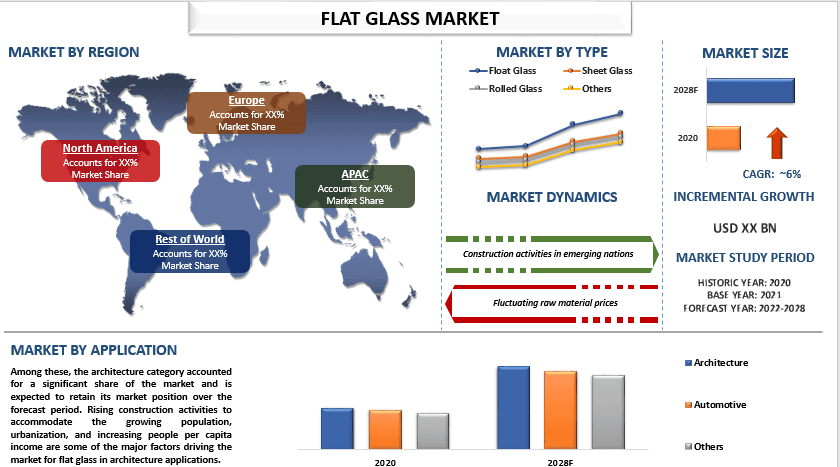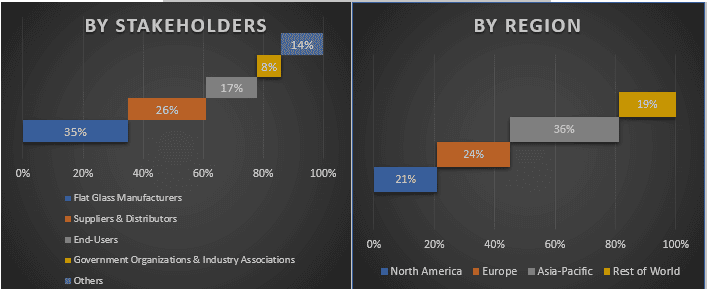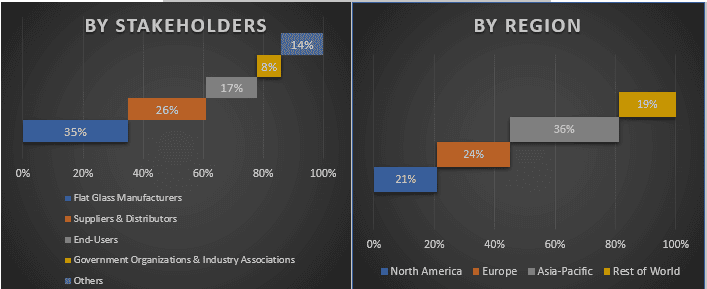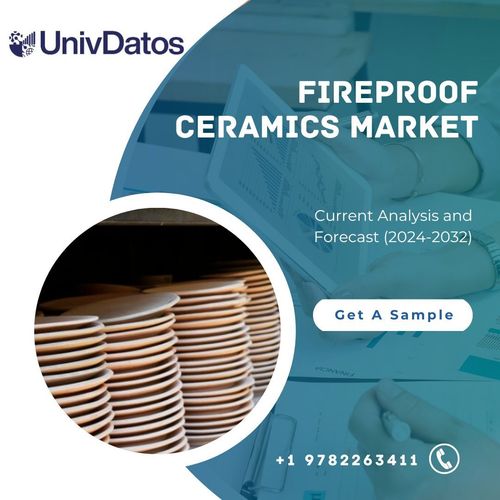
The global flat glass market is likely to showcase a growth of around 6% during the forecast period. The global flat glass industry is highly dependent on the construction and automotive industries. Over the years, the world has witnessed a significant rise in construction activities in both developed and developing worlds. This in turn creates a large demand for flat glass. However, the slowdown in automotive production in the last couple of years is affecting the flat glass manufacturers’ operations. Besides this, increasing investment in the renewable energy sector, especially solar is creating a new growth opportunity for the flat glass industry. Being a commoditized product, the flat glass industry has limited room to increase its margin. In addition to this, limited research & development in the flat glass industry has created resistance to the development of high-margin products. As a result, horizontal diversification like the solar application is gaining market traction among flat glass manufacturers. However, raw material costs play a crucial role in the industry, the industry has a limited margin therefore fluctuating raw material prices creates challenges for the companies to operate in an efficient manner.
Insights Presented in the Report
“Amongst type, float glass captured a dominant position in the market in 2020”
Based on type, the market is categorized into float glass, sheet glass, rolled glass, and others. Among these, float glass held the dominant position in the market in 2020 and is expected to retain its solid position in the market during the forecast period. This can be ascribed to the huge demand for float glass for architectural and automotive applications. Further, the float glass production process is less intricate compared to other types, as a result, it is easy for glass manufacturers to expand the production lines to meet the growing demand.
“Amongst applications, the architecture category held a prominent position in the market in 2020”
Based on application, the market is categorized into architecture, automotive, and others. Among these, the architecture category accounted for a significant share of the market and is expected to retain its market position over the forecast period. Rising construction activities to accommodate the growing population, urbanization, and increasing people per capita income are some of the major factors driving the market for flat glass in architecture applications.
“Asia-Pacific is likely to showcase significant growth during the forecast period”
For a better understanding of the market adoption of flat glass, the market is analyzed based on its worldwide presence in the countries such as North America (the United States, Canada, Rest of North America), Europe (Germany, the United Kingdom, France, Italy, Spain, and Rest of Europe), Asia-Pacific (China, Japan, India, and Rest of Asia-Pacific), and Rest of World. The Asia-Pacific captured a dominant position in the market and is expected to increase its market share over the forecast period. Robust growth in the construction industry and automotive industry especially in China in the last several decades has made the region the largest consumer of flat glass. Further, the increasing construction market in regional economies like India and ASEAN countries along with increasing automotive production facilities in the region is fueling the regional flat glass market.
Reasons to buy this report:
- The study includes market sizing and forecasting analysis validated by authenticated key industry experts
- The report presents a quick review of overall industry performance at one glance
- The report covers an in-depth analysis of prominent industry peers with a primary focus on key business financials, product portfolio, expansion strategies, and recent developments
- Detailed examination of drivers, restraints, key trends, and opportunities prevailing in the industry
- The study comprehensively covers the market across different segments
- Deep dive country-level analysis of the industry
Customization Options:
The global flat glass market can further be customized as per the requirement or any other market segment. Besides this, UMI understands that you may have your own business needs, hence feel free to connect with us to get a report that completely suits your requirements.
Table of Contents
1. Market Introduction
- Market Definitions
- Main Objective
- Stakeholders
- Limitation
2. Research Methodology Or Assumption
- Research Process of the Flat Glass Market
- Research Methodology of the Flat Glass Market
- Respondent Profile
3. Market Synopsis
- MARKET SYNOPSIS
4. 4. Executive Summary
- EXECUTIVE SUMMARY
5. Impact Of Covid-19 On The Flat Glass Market
- IMPACT OF COVID-19 ON THE FLAT GLASS MARKET
6. Flat Glass Market Revenue (usd Mn), 2020-2028f
- FLAT GLASS MARKET REVENUE (USD MN), 2020-2028F
7. Market Insights By Type
- Float Glass
- Sheet Glass
- Rolled Glass
- Others
8. Market Insights By Application
- Architecture
- Automotive
- Others
9. Market Insights By Region
- North America
- The United States
- Canada
- Rest of North America
- Europe
- Germany
- The United Kingdom
- France
- Italy
- Spain
- Rest of Europe
- Asia-Pacific
- China
- Japan
- India
- Rest of Asia-Pacific
- Rest of World
- North America
10. Flat Glass Market Dynamics
- Market Drivers
- Market Challenges
- Impact Analysis
11. Flat Glass Market Opportunities
- FLAT GLASS MARKET OPPORTUNITIES
12. Flat Glass Market Trends
- FLAT GLASS MARKET TRENDS
13. Demand And Supply-side Analysis
- Demand Side Analysis
- Supply Side Analysis
14. Value Chain Analysis
- VALUE CHAIN ANALYSIS
15. Pricing Analysis
- PRICING ANALYSIS
16. Strategic Initiatives
- STRATEGIC INITIATIVES
17. Competitive Scenario
- Competitive Landscape
- Porters Fiver Forces Analysis
- Competitive Landscape
18. Company Profiled
- AGC Inc.
- Compagnie de Saint-Gobain S.A.
- Nippon Sheet Glass Co. Ltd.
- Guardian Industries
- Şişecam Group
- Vitro S.A.B. de C.V.
- Central Glass Co. Ltd.
- Fuyao Glass Industry Group Co., Ltd.
- China Glass Holding Ltd.
- Xinyi Glass Holdings Limited
19. Disclaimer
- DISCLAIMER
Research Methodology for Global Flat Glass Market Analysis (2020-2028)
Analyzing the historical market, estimating the current market, and forecasting the future market of flat glass, three major steps are undertaken to create and analyze its adoption across the globe. Exhaustive secondary research was conducted to collect the historical market numbers and estimate the current market size. Secondly, to validate these insights, numerous findings and assumptions were taken into consideration. Moreover, exhaustive primary interviews were also conducted, with industry experts across the value chain of the industry. Post assumption and validation of market numbers through primary interviews, we employed a bottom-up approach to forecast the complete market size. Thereafter, market breakdown and data triangulation methods were adopted to estimate and analyze the market size of segments and sub-segments of the industry pertains to. Detailed methodology is explained below:
Analysis of Historical Market Size
Step 1: In-Depth Study of Secondary Sources:
Detail secondary study was conducted to obtain the historical market size of flat glass through company internal sources such as annual reports & financial statements, performance presentations, press releases, etc., and external sources including journals, news & articles, government publications, competitor publications, sector reports, third-party database, and other credible publications.
Step 2: Market Segmentation:
After obtaining the historical market size of the Flat Glass market, we conducted a detailed secondary analysis to gather current market insights and share for different segments & sub-segments for major regions. The major segment is included in the report by type and application. Further regional and country-level analyses were conducted to evaluate the overall adoption of Flat Glass globally.
Step 3: Factor Analysis:
After acquiring the historical market size of different segments and sub-segments, we conducted a detailed factor analysis to estimate the current market size of Flat Glass. Further, we conducted factor analysis using dependent and independent variables such as construction activities and fluctuating raw material prices. A thorough analysis was conducted of demand and supply-side scenarios considering the increasing investment, top partnerships, mergers and acquisitions, business expansion, and product launches in the flat glass industry.
Current Market Size Estimate & Forecast
Current Market Sizing: Based on actionable insights from the above 3 steps, we arrived at the current market size, key players in the global market, and market shares of each segment. All the required percentage shares split, and market breakdowns were determined using the above-mentioned secondary approach and were verified through primary interviews.
Estimation & Forecasting: For market estimation and forecast, weights were assigned to different factors including drivers & trends, restraints, and opportunities available for the stakeholders. After analyzing these factors, relevant forecasting techniques i.e., the bottom-up approach were applied to arrive at the market forecast for 2028 for different segments and subsegments across the major regions globally. The research methodology adopted to estimate the market size encompasses:
- The industry’s market size, in terms of value (US$) and the adoption rate of flat glass across the major markets
- All percentage shares, splits, and breakdowns of market segments and sub-segments
- Key players in the Flat Glass market. Also, the growth strategies adopted by these players to compete in the fast-growing market
Market Size and Share Validation
Primary Research: In-depth interviews were conducted with the Key Opinion Leaders (KOLs) including Top Level Executives (CXO/VPs, Sales Head, Marketing Head, Operational Head, Regional Head, Country Head, etc.) across major regions. Primary research findings were then summarized, and statistical analysis was performed to prove the stated hypothesis. Inputs from primary research were consolidated with secondary findings, hence turning information into actionable insights.
Split of Primary Participants by Stakeholders and Regions

Market Engineering
The data triangulation technique was employed to complete the overall market estimation and to arrive at precise statistical numbers for each segment and sub-segment of the global flat glass market. Data was split into several segments & sub-segments post studying various parameters and trends in the area of type and application.
The main objective of the flat glass market study
The current & future market trends of global flat glass were pinpointed in the study. Investors can gain strategic insights to base their discretion for investments on the qualitative and quantitative analysis performed in the study. Current and future market trends would determine the overall attractiveness of the market at a country level, providing a platform for the industrial participant to exploit the untapped market to benefit as a first-mover advantage. Other quantitative goals of the studies include:
- Analyze the current and forecast market size of Flat Glass in terms of value (US$). Also, analyze the current and forecast market size of different segments and sub-segments
- Segments in the study include the area of the type and application
- Defined analysis of the regulatory framework for the flat glass industry
- Analyze the value chain involved with the presence of various intermediaries, along with analyzing customer and competitor behaviors of the industry
- Analyze the current and forecast market size of flat glass for the major countries
- Major regions/countries analyzed in the report include North America (the United States, Canada, Rest of North America), Europe (Germany, the United Kingdom, France, Italy, Spain, Rest of Europe), Asia-Pacific (China, Japan, India, Rest of Asia-Pacific), and Rest of World
- Company profiles of the flat glass market players and the growth strategies adopted by them to sustain the growing market
Deep dive country-level analysis of the industry

You can also purchase parts of this report. Do you want to check out a section wise
price list?
Related Reports
Customers who bought this item also bought










